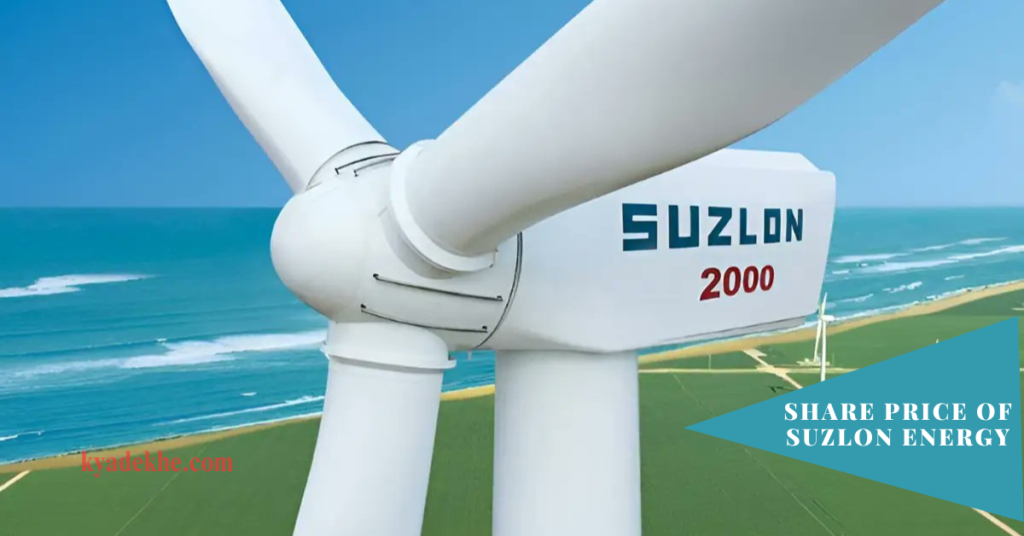tata power share price
Welcome to Kyadekhe.com! In this article, we’re going to dive deep into Tata Power, one of India’s leading power generation, transmission, and distribution companies. Tata Power is a prominent player in the energy sector, and it’s currently undergoing a significant transformation from traditional thermal power to renewable energy sources. If you’re an investor or considering investing in this sector, you’re in the right place.

In this comprehensive analysis, we’ll discuss Tata Power’s business model, its historical performance, financials, future outlook, valuations, and potential risks. By the end of this article, you’ll have a well-rounded view of whether it’s a good time to buy Tata Power shares.
Tata Power’s Business Model
Tata Power operates in the generation, transmission, and distribution of electrical power. What sets them apart is their engagement in all three segments of the energy value chain, which not all companies in the sector do. In recent years, Tata Power has been making significant strides towards becoming a vertically integrated ecosystem in the renewable energy space. They are involved in everything from manufacturing solar cells in their plants to EPC (Engineering, Procurement, and Construction), power generation, and distribution. Their long-term vision is impressive; by 2030, they aim to make 80% of their power generation portfolio green, and by 2045, their entire power generation will come from renewable sources.
Revenue Segmentation -tata power
As of now, Tata Power’s revenue is primarily derived from thermal power generation and transmission/distribution. Thermal power generation contributes around 4,800 crores out of a total of 15,000 crores. The renewable energy segment, which includes EPC, contributes about 2,000 crores. However, this balance is expected to change significantly in the near future. Some projects under construction will shift the revenue structure to around 49% thermal and 51% solar and other renewable sources. This transition aligns with their goal of becoming 100% reliant on renewable energy sources by 2045.
Historical Performance -tata power
Tata Power’s stock chart has seen its share of ups and downs. For many years before the pandemic, it was in a long-term consolidation phase. However, post-COVID, there was a notable resurgence in the stock. In the past year, it’s been undergoing another consolidation phase and is currently trading around the 250 mark.
When examining the revenue trends, we can see stagnation and even declines prior to the pandemic. But in the post-COVID era, Tata Power witnessed significant revenue growth, with figures climbing from approximately 29,000 crores to almost 55,000 crores in the fiscal year 2023. It’s essential to note that their profitability has outpaced their revenue growth due to margin expansion. Operating income increased from about 3,000 crores in FY19 to almost 7,700 crores in FY23.
Debt Levels
One critical factor that investors need to closely monitor is Tata Power’s debt level. The company has been carrying a high debt load, and the interest costs associated with this debt have been eating into profits. Although the company aims to become debt-free in the future, the numbers haven’t shown significant progress in this area. In fact, the debt level increased in FY23 to approximately 52,900 crores. The company’s growth plans in the renewable sector have consumed a significant portion of their cash flow, making it challenging to reduce the debt. This situation has a direct impact on their profit margins.
Growth Drivers
Several factors have contributed to the increase in Tata Power’s share price. The growth in India’s economy has led to higher power consumption, benefiting the company. Tata Power has also ventured into various verticals, including solar and wind energy, as well as innovations in transmission and customer billing processes using smart meters. Their EPC order book, which includes group orders, stands at a substantial 4,200 megawatts, equivalent to about 17,600 crores. They are also making strides in the electric vehicle (EV) charging space, with over 4,300 public EV chargers already installed. Rooftop solar setups and solar pump installations are also part of their growing order book.
tata power Valuations
In terms of valuations, Tata Power appears reasonably priced. It trades at a market cap-to-sales ratio of around 1.5 times and has a price-to-earnings (P/E) ratio of just about 23. These valuations seem reasonable, but for them to be sustainable, two crucial factors must be closely monitored: the company’s ability to maintain its growth momentum and reduce its debt levels, which will, in turn, lead to improved profit margins.
tata power Risks
Investing in Tata Power is not without its risks. The company must generate free cash flow to reduce its debt, which is currently at a significant level. Moreover, the renewable energy sector is becoming increasingly competitive, and Tata Power must ensure that its ventures in this space remain cost-effective. Additionally, the company’s promoter holding is less than 50%, which limits their ability to issue fresh equity shares to repay debt without further diluting promoter ownership.
Conclusion
In conclusion, Tata Power is a company in transition, aiming to shift its entire power generation to renewable sources by 2045. If you’re already invested in the company and can afford to be patient, it might be a good idea to hold your position and monitor the growth of their renewable energy business and the reduction of debt levels. However, if you’re considering a fresh investment, keep in mind that meaningful changes will take time. Tata Power’s stock is most likely to re-rate when renewable energy significantly contributes to their revenue, and their debt levels decrease, leading to improved profit margins. This makes Tata Power a suitable option for long-term investors who are willing to exercise patience.
Please note that this analysis is for educational purposes and not a buy/sell recommendation. As with any investment, it’s essential to conduct thorough research and consider your investment horizon and risk toleranc.
Disclaimer
The information provided in this article is for educational and informational purposes only and does not constitute financial advice. Always conduct thorough research and consult with a qualified financial advisor before making any investment decisions.
Also visit : Adani Stocks : Should Buy Or Not Analysis 2024




